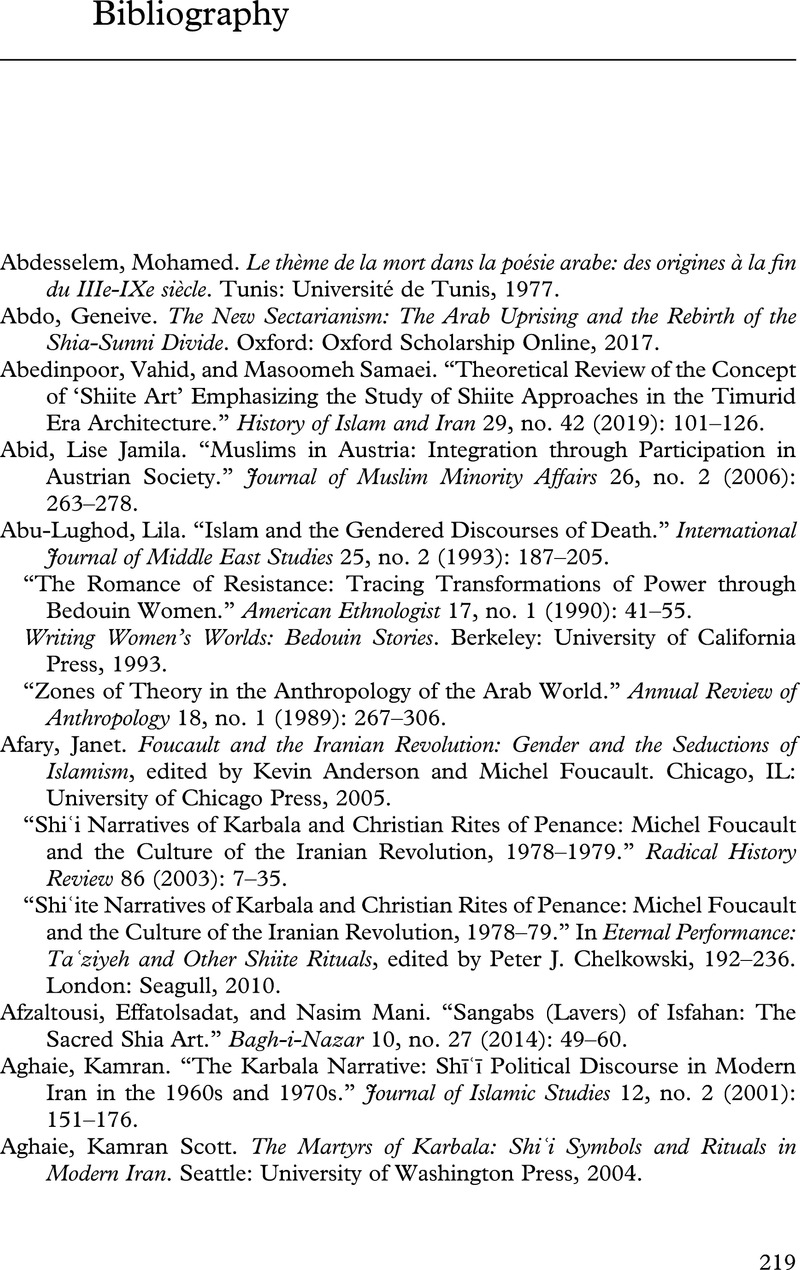 The Art of Resistance in Islam
The Art of Resistance in Islam Book contents
- The Art of Resistance in Islam
- Cambridge Middle East Studies
- The Art of Resistance in Islam
- Copyright page
- Contents
- Figures
- Preface
- Note on Transliteration
- Introduction
- 1 Trajectories of Shiʿis in the Gulf and Their Presence in Europe
- 2 The Rites of Mourning within Shiʿi Islam
- 3 Performing the Sacred
- 4 Aestheticization of Politics
- 5 Fatima’s Apparition
- 6 The Power of the Word
- 7 Conclusion
- Bibliography
- Index
- Books in the Series
- References
Bibliography
Published online by Cambridge University Press: 06 January 2022
- The Art of Resistance in Islam
- Cambridge Middle East Studies
- The Art of Resistance in Islam
- Copyright page
- Contents
- Figures
- Preface
- Note on Transliteration
- Introduction
- 1 Trajectories of Shiʿis in the Gulf and Their Presence in Europe
- 2 The Rites of Mourning within Shiʿi Islam
- 3 Performing the Sacred
- 4 Aestheticization of Politics
- 5 Fatima’s Apparition
- 6 The Power of the Word
- 7 Conclusion
- Bibliography
- Index
- Books in the Series
- References
Summary

- Type
- Chapter
- Information
- The Art of Resistance in IslamThe Performance of Politics among Shi'i Women in the Middle East and Beyond, pp. 219 - 241Publisher: Cambridge University PressPrint publication year: 2022


